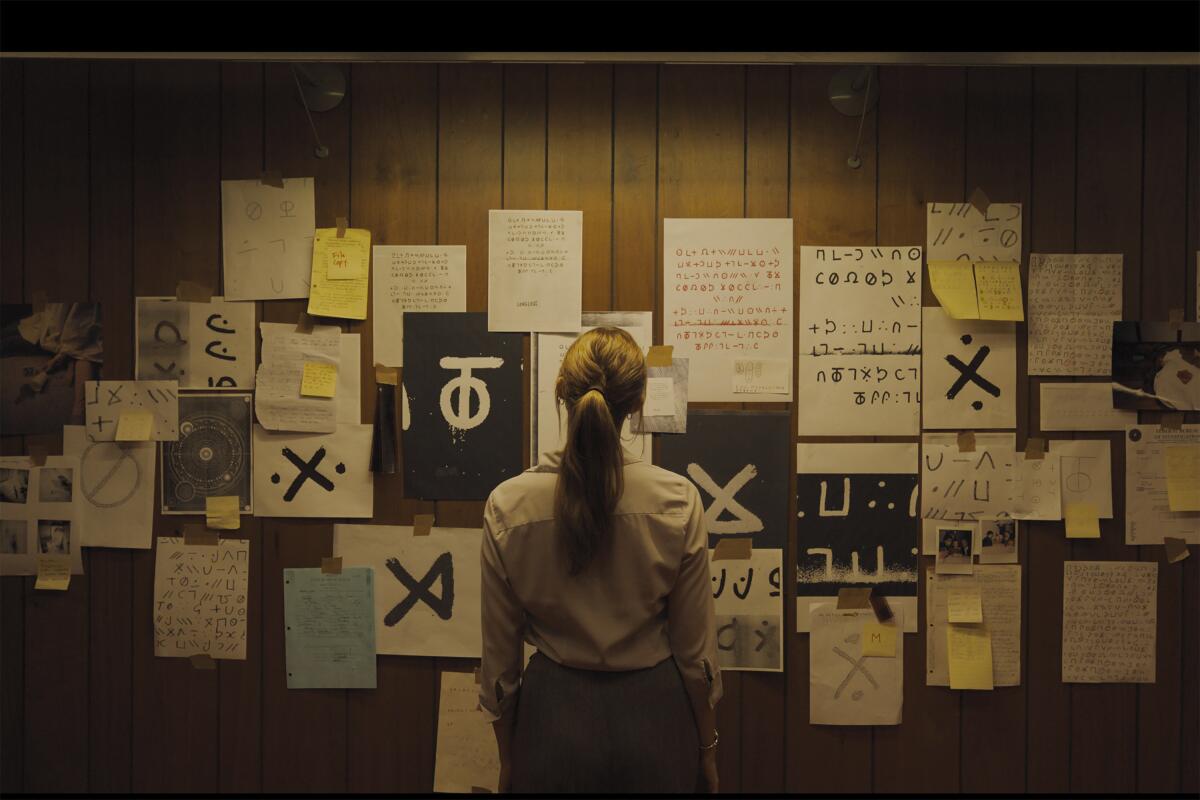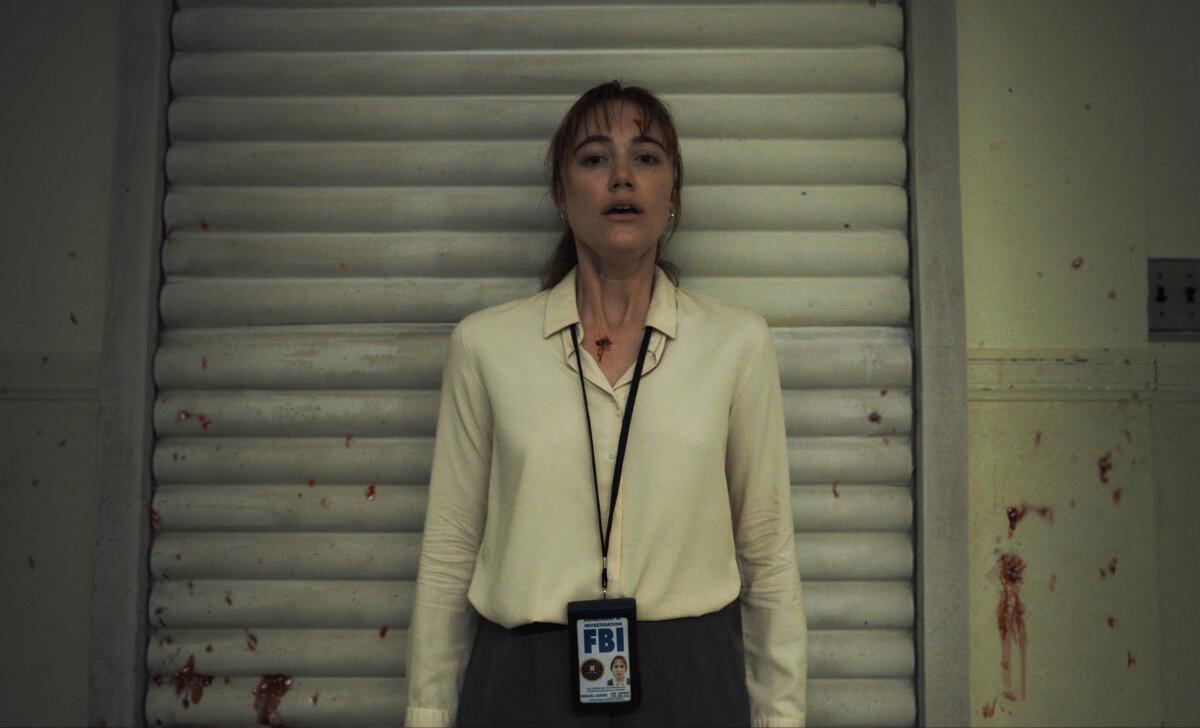Filmmaker Osgood Perkins’ eerie, occultist serial-killer horror thriller “Longlegs” opens with a psyche-rattling sequence, barely a minute or two long, in which he crafts a chilling sense of shock, awe and humor simply through shot composition, editing and performance. It unsettles the viewer on a bone-deep level, the tension bursting like a bubble on a bravura music cue.
It is scary — only because of how it is presented formally, not necessarily thanks to any of the basic actions or imagery on screen — and it is thrilling because Perkins announces from the outset his audacious approach to tone as well as his mastery of cinematic technique to create suspense. The tension never lets up throughout “Longlegs,” though it is peppered with a dry, black humor that somehow just makes everything more disturbing.
One should know as little as possible about “Longlegs” for the best viewing experience. In fact, feel free to stop reading now if experiencing an entirely unpredictable plot and the sensation of sickening dread mixed with bleak humor for 100 minutes sounds like an appealing cinematic experience (it is). But we shall proceed here, because “Longlegs” is too rich a text not to unpack a little, and the obstacle course of writing around its true horrors is a worthy challenge.

Maika Monroe in the movie “Longlegs.”
(Neon)
Though it’s a facile comparison, “Longlegs” feels like Perkins’ version of “The Silence of the Lambs,” in that it follows a young female FBI agent as she plays cat and mouse with a serial killer (there’s also a shared enthusiasm for British ’70s rock on behalf of our respective boogeymen). Special Agent Lee Harker (Maika Monroe) has the preternatural skill and drive of Clarice Starling, and both characters similarly fail to mask their vulnerability with toughness, though in different ways.
Harker’s not a people person but she is highly intuitive, perhaps even a little bit psychic. She’s recruited by Special Agent Carter (Blair Underwood) for precisely that quality, to start reinvestigating the cold case of a series of possibly related family murders wherein a person called Longlegs has claimed a kind of distant responsibility through coded notes. As she dives deeper into her research, it’s revealed that Harker is strangely connected to these cases. (Is she psychologically gifted or are these memories?)
Nicolas Cage plays a strange suspect in one of his more outré and unrecognizable performances. He is brilliant and clearly having a blast committing wholeheartedly to his wacky and terrifying choices (though Cage has never not committed above and beyond in every performance). Alicia Witt also appears as Harker’s mother, with whom the agent has a close but complicated relationship. Monroe, with a sort of placid sullenness, is the eye of the storm amid these colorful characters, including her hard-charging boss Carter.
The performances work in tandem with the astonishingly meticulous and precise filmmaking: Perkins, the son of “Psycho” star Anthony Perkins, has a marvelously methodical eye in crafting cinematic images and sound. With cinematographer Andres Arochi, who works magic with the structure of light, Perkins centers Harker in carefully composed shots where she is dwarfed by the environment, emphasizing her smallness and sense of feeling overwhelmed. The camera toggles between objective observation of our protagonist and an alignment with her point of view and actions. Slow, creeping zooms mimic her vision, and backward tracking shots continuously drag her into danger, her gun always drawn.

Maika Monroe in the movie “Longlegs.”
(Neon)
The camera bears an omniscient, ominous knowingness that can’t always be trusted (with echoes of Monroe’s “It Follows”), but repeated shots and scenarios suggest connection and comparison between different characters across time, so there is an internal rhythm to the filmmaking even as the story defies traditional logic.
“Longlegs” is also a masterpiece of production design (by Danny Vermette) and set decoration (by Trevor Johnston) that suggests an era and a place (mid-1990s Oregon) and fills in that world with pertinent visual information. Perkins also peoples the cast with interesting and memorable supporting roles that make the world of “Longlegs” bigger, richer and weirder, and helps us to understand the characters further, seeing how they interact with the world around them.
However, “Longlegs” does not offer up easy answers about itself on a macro level. Watching it feels like a riddle, the film itself a code to crack, and by the time it’s done, the whole puzzle has not yet been solved. That’s OK. Understanding everything is not the point in a film that offers such a delicious roller coaster ride of bad vibes. Just jump on board and let Perkins guide the way — the journey is more than worth it.
Katie Walsh is a Tribune News Service film critic.
‘Longlegs’
Rating: R, for bloody violence, disturbing images and some language
Running time: 1 hour, 41 minutes
Playing: Now in wide release